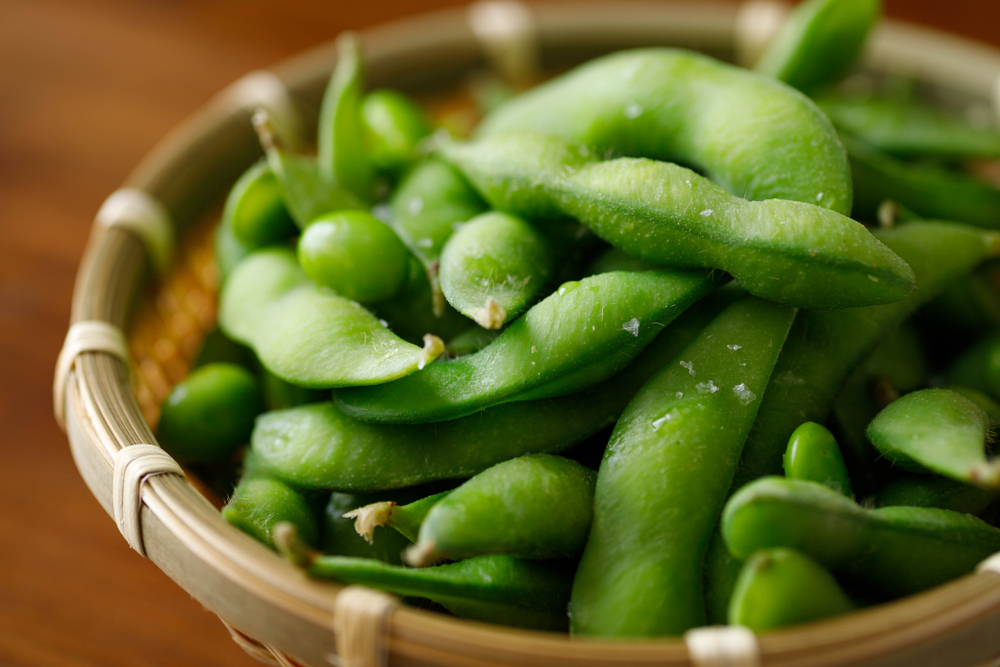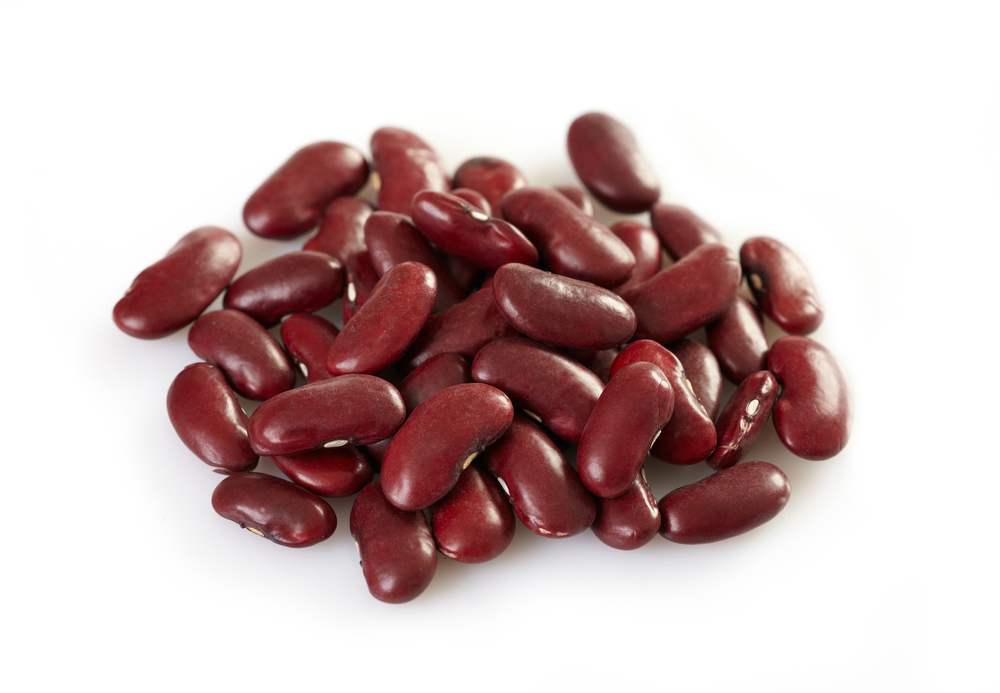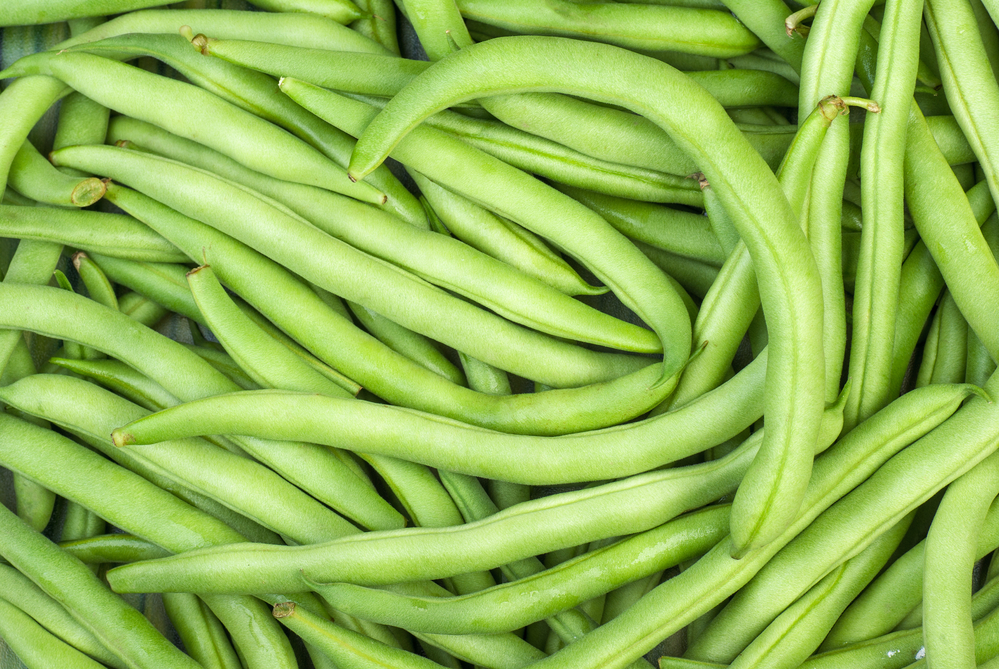Many who have enjoyed edamame beans have found themselves asking one question. Is it okay to eat the pods? Are the lengthy pods that the beans come in edible and if so, are they good for you?
Unfortunately, edamame pods are considered inedible. They are difficult to chew and swallow in the first place, and they can also cause digestive health issues if consumed.
It’s sad to say, as tasty as edamame beans are, the pods that they come in should not be eaten under any circumstances. Even if you do manage to chew them up and swallow them, a lot of digestion issues can be caused by doing so.
What Are Edamame Pods?
You may not be aware of this, but edamame beans are essentially just immature soybeans. So if the pods are left planted and are allowed to grow as normal, they will grow in time and turn into full blown mature soybeans.
Edamame beans are quite popular thanks to their remarkable texture, flavor and mouthfeel. They’re particularly great when they’re cooked just right, and thankfully it’s very easy to do just that in the comfort of your own home.
Now of course, those edamame beans come in a pod. A firm shell which does a good job of holding them tightly in place.
Edamame pods are very similar in their appearance to pea pods. They both have a bright green color. But edamame pods are a little shorter and more compact in comparison to the average pea pod.
On average, an edamame pod will have one, two or three beans on the inside. The pod is wrapped so tightly around the bean that you should actually be able to tell how many are in the pod without even opening it.
How Tough Are Edamame Pods? How Do You Open Edamame Pods?
While the pod itself is quite firm in it’s appearance and makeup, the texture it has is quite smooth. These can be remarkably tough and hard to open, especially if you haven’t cooked them yet.
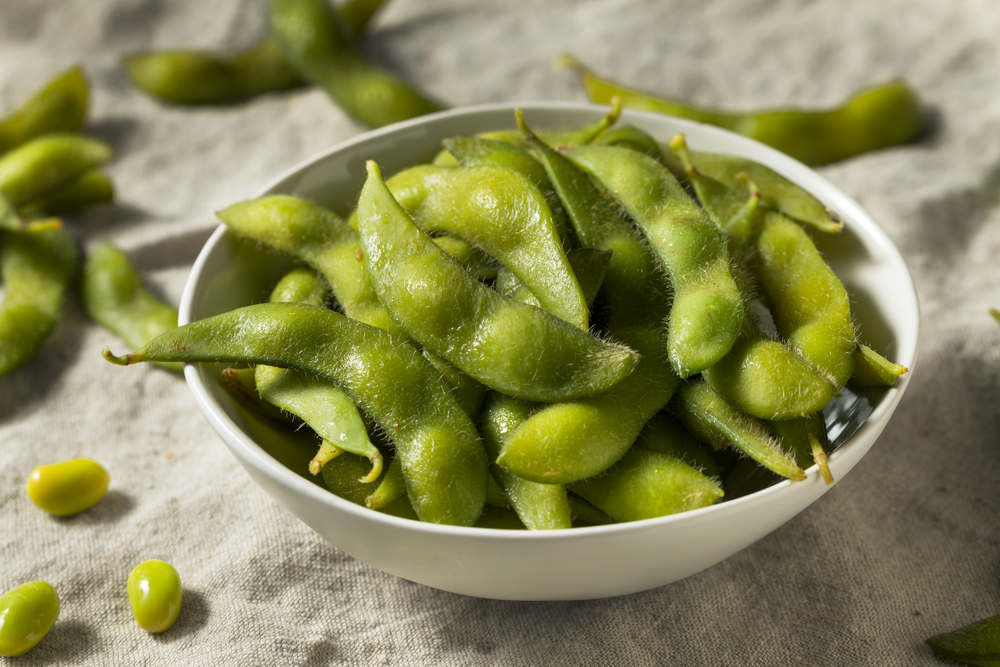
As such, edamame pods are pretty much always well boiled before they’re opened up and served. This helps out a lot because boiling the pod helps hydrate them and loosen the plant fibers.
This tenderizes the shell as well as the beans inside the pod. Cooking them is pretty simple and doing so correctly will make the pods relatively soft and ever-so-slightly pliable.
Once the pods have properly cooled down, you’ll be able to squeeze the beans right out of the pod by just pressing them tightly between your fingers. Alternatively you can use your teeth but we wouldn’t recommend biting into the pod itself!
Taste And Texture Of Edamame Beans
Let’s talk a bit more about the beans inside the pod now, since they’re the real main attraction. We’ll discuss the pod itself a bit more later, but the beans are very much the most important part.
Edamame beans taste very similar to peas, as far as their flavor profile goes, they’re quite closely related. Their texture is distinctly buttery and they have a very nutty and sweet combination going for them.
Visually speaking, their shape most closely resembles that of kidney beans. However they’re typically smaller and more compact in size.
Once again we’ve found ourselves mentioning the relatively small size of edamame beans and pods. Keep in mind that they’re just immature soybeans, and so they were deliberately harvested before getting the chance to grow to full size.
The beans are normally cooked while they’re still in their pod for convenience, and are commonly served with many condiments, but you can just as easily eat them with a simple seasoning of salt.
Taste And Texture Of Edamame Pods
We had plenty of nice things to say about the flavor of the beans inside the pods, but what of the pods themselves? They aren’t typically eaten for the reasons we’ve gone into, but we do know a little bit about their taste.
When boiled in salty water, the way edamame is usually cooked, the pods take on a mild earthy flavor. It’s of course plant-like, as you might imagine from a plant, wth small hints of sweetness and saltiness.
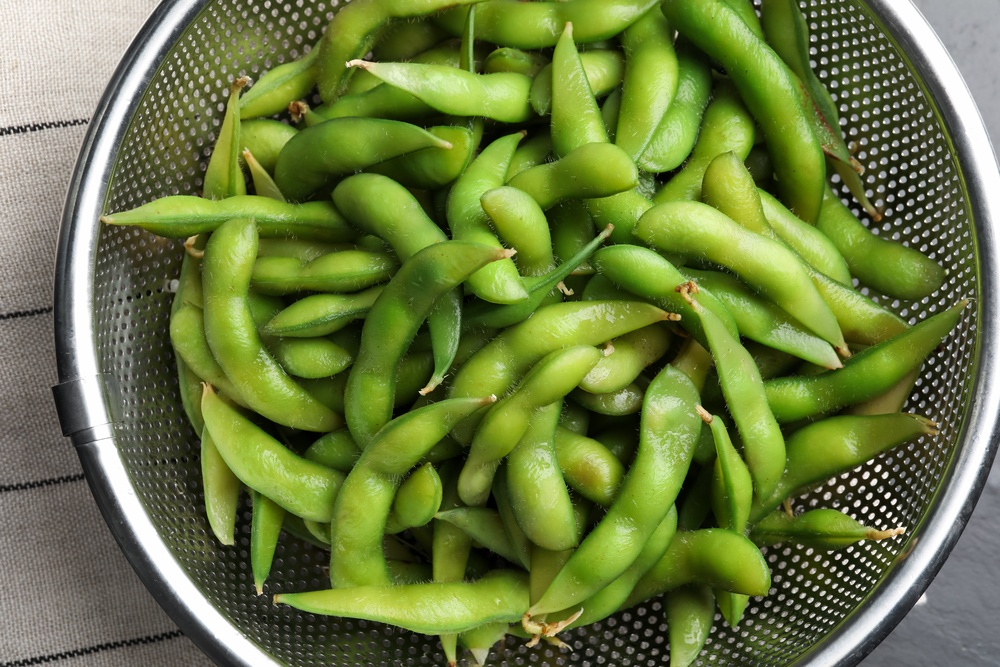
That might sound nice, and perhaps you would find it that way. But the risks would hardly be worth the reward because like we said, edamame pods aren’t considered edible.
Why Aren’t Edamame Pods Edible?
The key thing preventing them from being safely consumed is their nutrients. You see they contain a ton of fiber, but not the good kind.
Most of it is insoluble. What that means is, they can’t be dissolved. Food that can’t be dissolved, therefore, can’t be digested.
That means when you eat an edamame pod, most of it is going to pass through the body and add bulk to your stool samples. That’s not good for you!
Eating food that you can’t digest can cause some serious issues. Of course, most people that try don’t even get that far in the first place.
If you were to bite into one, you’d immediately find out how chewy and tough it is, even when fully cooked. They can’t easily be ripped apart and put up a real fight being chewed up.
As such, most people will intuitively just eat the beans before getting rid of the pods.
Uses For Edamame Pods
Everyone likes versatility and we’d love to tell you that there’s all sorts of things you can do with edamame pods, even if eating them is off the table.
But sadly, there’s just nothing to be done with them. The truth is that all that they’re good for is storing the beans and perhaps helping the cooking process.
Ingesting them in any way will tax your digestive system and potentially cause blockages. This is especially true if they aren’t thoroughly chewed, and like we said, that’s really hard to do!
The pods are naturally quite fibrous and although you can get some flavor of them by chewing on them, you should really discard the pod after use rather than risk swallowing them.
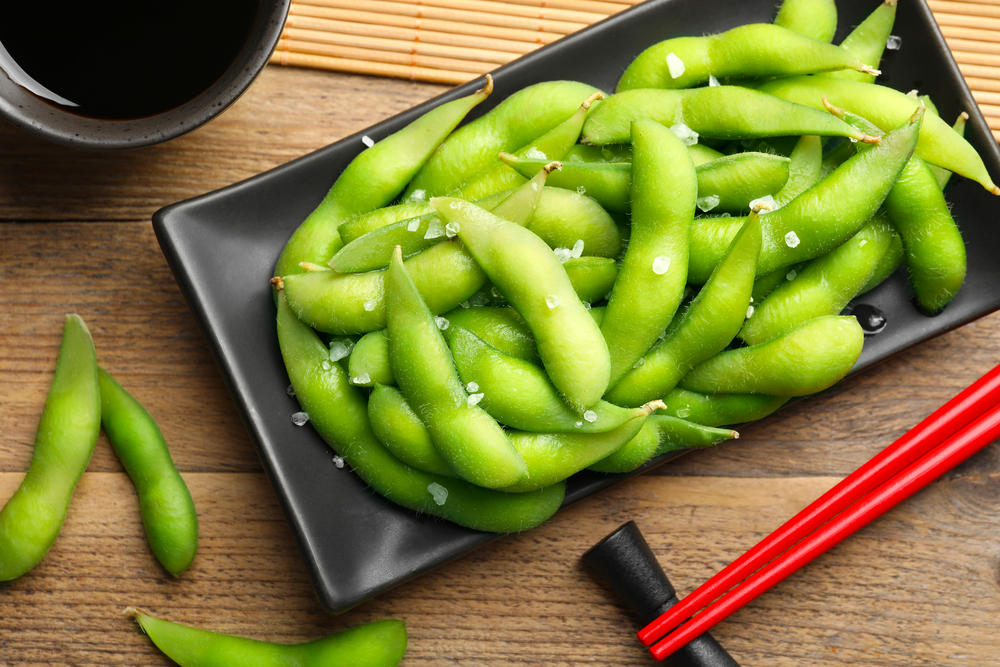
This is the recommendation for both cooked and raw edamame pods. At the end of the day, the only thing they’re good for is what they add to the beans themselves.
They add a flourish to the presentation of the meal of edamame beans and make the whole thing a lot more fun. They help turn the beans into more of an addicting snacking item and a delicious one to boot!
The pods do admittedly lend a hand in the cooking process, since they help heat travel evenly through the beans and help them cook thoroughly while the pod is being steamed.
Cooked Edamame Pods vs. Raw Edamame Pods
You might be wondering how to identify a cooked edamame pod as opposed to a raw one.
Visually, there isn’t really much distinction and it can be particularly tough to know the difference if they’re frozen. That’s because the only real way to tell is to take hold of them and feel them.
You’ll always want to inspect the pods by running your fingers across the surface and seeing if there’s any tenderness to them.
Uncooked edamame pods are extremely tough as we’ve gone over, and have a very firm feel to them. They aren’t pliable and what’s more, the beans inside will seem immovable, as if stuck in place.
Once fully cooked, though, the pods will soften quite noticeably and become much more tender and pliable to the touch. And at that point, getting the beans out from the pod is an absolute breeze.
All you really need to do at that stage is squeeze on the pod until the beans pop out. If you’re unable to do this, chances are that you’re dealing with an uncooked edamame pod. This isn’t to say that it’d be impossible to do this with a raw one but it would come with much more resistance.
Distinguishing between cooked and uncooked edamame pods is an important thing because raw ones will come with a high amount of lectin, something we’ll explain more later.
I Ate An Edamame Pod – What Should I Do?
Well, that’s not good news! We’ve been warning against eating them, but if you found this article because you’ve already consumed one, we’ll let you know what to do.

You can wait until you feel any noticeable symptoms before contacting a doctor, or go ahead and get in touch preemptively.
These cases usually aren’t that severe so most people do wait to see if any symptoms arise before doing anything. Just note that experts will always recommend that you visit your local physician at the first sign of any ill effects.
So with that being said, what are the symptoms you should be on the look out for after eating an edamame pod? Here are a few common ones:
- Stomach cramps
- Nausea
- Vomiting
- Localized pain in the stomach
- Dizziness
- Diarrhea
These symptoms could come individually or be experienced in combination with each other. All of this could be considered common fare after eating an edamame pod.
At the onset of any of these symptoms, consult with a doctor right away.
The start time and duration of these symptoms can be tricky to get a gauge on but you’ll likely feel very uncomfortable within the same day the symptoms begin.
You’ll want to consult with your local health provider and get an expert opinion – one more nuanced than you’d find on a cooking website! – on what to do next.
However it is possible for you to get away with eating edamame pods without experiencing any real symptoms at all. That’s actually a pretty common prognosis, atleast as it pertains to cooked pods.
Uncooked edamame pods are a different story. Like we said, these contain a high dose of lectin. Lectin is a toxic compound, one that plants actually make use of to fend off predators.
Lectin, if consumed in large enough doses, could land you in the hospital.
How To Reduce Lectin In Edamame
Both the pods and the beans inside actually include varying amounts of this toxic compound. So that begs the question, what is the best way to rid your food of this unwanted glycoprotein?

You’ve probably guessed, since this is primarily a concern for uncooked edamame pods, but the main way to lower the amounts of lectin is by cooking it! Steaming or boiling the edamame will net you the best results.
This is because exposure to heat causes the lectin compounds to break down and become inactive. As such you can avoid getting sick even after gorging on a whole host of cooked edamame beans.
But that’s the beans we’re talking about. The shell itself can actually still have a small amount of active lectin on it thanks to the remarkably tough layering and density of the outer pods.
You might not always get sick from chewing on the pods but this is definitely another reason why you should probably just forget about trying to eat them.
Still, don’t be afraid of them while you’re getting the beans out. Swallowing them is a bad idea but using your teeth to get the beans out, for example, isn’t considered dangerous.
Some would say this is part of the fun of eating edamame pods!
How To Cook Edamame Pods
This is a simple thing to do, and in fact there’s plenty of options for getting the job done, all of them very easy to pull off!
All you need at the end of the day is a big pot filled with water, some salt and enough time to fully cook the edamame.
Something to note though is that, unless you’re living in Japan as you read this, chances are you’re only going to have access to frozen edamame. And frozen edamame usually comes pre-cooked unless it’s stated to the contrary on the packaging.
If the package comes with instructions on preparing the edamame, you should likely go ahead and stick to them. Recooking the edamame in your own way at that stage might end up ruining it and giving it a mushy texture.
That said, if the pack does say that it’s uncooked, you have a lot of options for how you can go about cooking it. These are as follows:
- Boiling
- Roasting
- Sauteing
- Defrosting Alone (Only available for cooked edamame)

The roasting method is generally thought to the best way to cook edamame and unlock the delicious flavors from within.
As for defrosting, that’s important in every way but of course when it comes to cooked edamame, it can be the entire process if you so wish. We’ll cover that one later.
Roasting Edamame (Step-By-Step Instructions)
- Preheat the stove to medium heat, put on a cast-iron or nonstick pan and let it get hot
- Add in the frozen edamame pods, stir on occasion until there’s color or light charring on either side of the pod (You want a light brown coloration, definitely not burnt! Avoid totally charring it to keep from negatively altering the beans inside)
- Once the pods have been properly heated and have a nice coloration, take them out and sprinkle some salt over them
- Let pods site for 3-5 minutes before squeezing out the beans
Boiling Edamame (Step-By-Step Instructions)
- Fill a pot with water, place it on the stove and let it simmer to a boil
- Optionally, you might add a sprinkle or more of salt to the boil during this point, depending on the size of the pot
- Add the frozen edamame pods into the water
- Let the pods boil for around 3-4 minutes
- Keep an eye on the pods as this happens, note that they sink to the bottom but then rise to surface upon being fully cooked
- After this is done, drain the pods, salt them a little more and you’re ready to extract the beans
Sauteing Edamame
This is a great choice if you’d like to mix in a range of various ingredients as you cook the edamame.
Sauteing will allow you to take more control over the taste of the beans in the end.
To do this, you’ll want to make some spiced edamame first by mixing in crushed garlic, soy sauce, peppers and things of that ilk.
From there, there’s all sorts of recipes that you can use to maximize the flavor and texture of the veggie. But remember that even though you’re cooking the pod, none of these methods will make them truly edible.
You should always discard the pod after extracting the beans regardless of what method you used to cook the edamame.
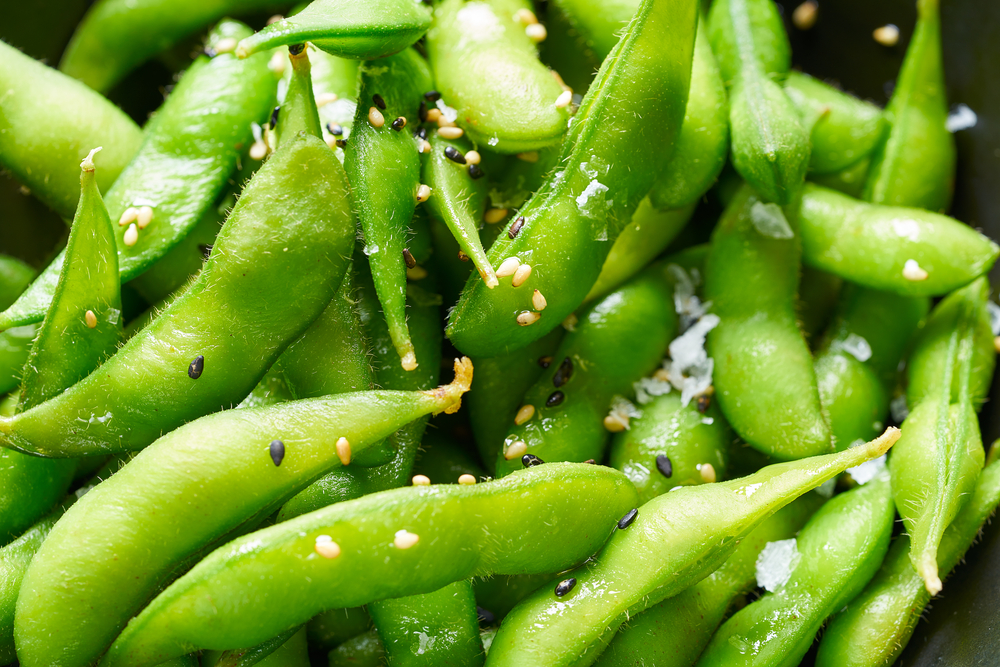
How To Thaw Out Edamame
Now of course this is an important step for preparing frozen edamame regardless of what you choose to do to cook it. But if you have frozen cooked edamame, this can also be the only step!
If you have a bag of pre-cooked edamame, all you really need to do before enjoying it is transfer it over from the freezer to the fridge and let it sit overnight. Once thawed, these pods should be safe to consume without any heat applied.
Alternatively you can thaw the pods out at room temperature but it’s recommended that you don’t leave them exposed for more than two hours, or you’ll risk bacterial growth.
You can use the microwave to help thaw them out as well, and this is the quickest method but also the one with the biggest risk of deteriorating the quality of the food.
Nevertheless, if you’re in a hurry, you can put the pods in the microwave and set the power setting to defrost. Watch them as they cook and take them out as soon as they’re properly thawed.
Goes without saying, but bears repeating, that this only applies to cooked edamame. With raw edamame, you’ll want to cook it after thawing.
Be sure to check the packaging thoroughly or ask whomever you’re buying them from whether or not they’re cooked.
In Conclusion…
To answer the titular question as succinctly as possible – no. You can’t really eat edamame pods, atleast not without some risk of a mild to severe illness, depending on whether they are cooked or uncooked.
They pose a threat to your digestive health when consumed and can potentially cause blockages, meaning that nobody would recommend that you eat them.
While it’s not impossible to get away scot free, it’s definitely for the best that you avoid trying to eat them altogether. Just stick to eating the tasty beans inside!



